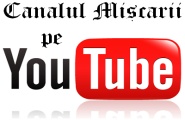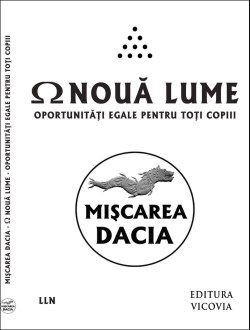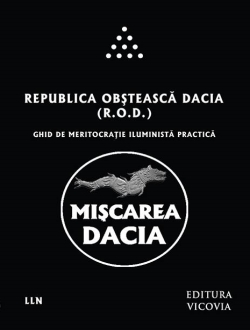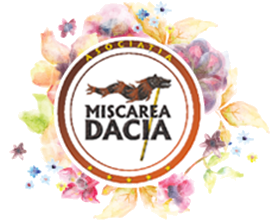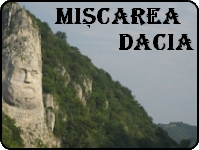 Vă invit să vă alăturaţi grupului Facebook Mişcarea DACIA, ce-şi propune un alt fel de a face politică!
Vă invit să vă alăturaţi grupului Facebook Mişcarea DACIA, ce-şi propune un alt fel de a face politică!Citiţi partea introductivă şi proiectul de Program, iar dacă vă place, veniţi cu noi !
O puteţi face clicând alături imaginea, sau acest link
Posts Tagged ‘Milton’
Hyperian History Of The World (17th Century, Part 3)
Noutăţi
Hyperian History Of The World (17th Century, Part 3)
The 17th Century also saw major developments in the arts. If the focus of the renaissance had been on the visual arts of painting and sculpture, matching and surpassing the visual style of ancient Greece and Rome, the 17th century saw truly innovative ideas in both Literature and Music.
Music had, of course, since prehistoric times, been used for both entertainment as well as for spiritual and religious purposes. Whilst all manner of folk traditions existed, featuring traditional instruments accompanying the singing of songs, the religious power of music had been recognised by the catholic church and, over the centuries, a kind of formalisation of music had occurred.
Catholic monks had begun singing excerpts of the bible using simple melodies. The singing was unaccompanied, as the human voice was considered the only pure instrument. Eventually, monks developed techniques of harmony and counterpoint to increase the complexity as well as the beauty of their singing. Crucially, a system had been developed where music could be written down and thus the same pieces could be performed by different musicians and preserved for ever. Eventually composers began to study music to high levels and produce beautiful works of polyphony, yet nearly always for religious purposes, such as musical settings of the catholic mass, always for unaccompanied singers. By the renaissance, this kind of music reached its greatest heights in the work of composers such as Giovanni Palestrina, in Italy.
Yet in the 17th century, the ambitions of composers would reach greater heights. The universality of renaissance art, as well as the literary move away from the religious language of Latin towards the vernacular languages (since Dante), had led to the idea of high art for ordinary people, not just for religious purposes but neither simply for entertainment. The same thing was to happen with music, chiefly through the most significant development of the 17th century – Opera.
Opera became, arguably, the most important artistic synthesis since ancient Greek tragedy. An opera was a theatre performance, yet the performance was entirely accompanied by music and all the dialogue was sung rather than spoken. Rather than the sombre church singing of renaissance religious compositions, opera was exciting, vibrant and energetic. Singers were accompanied by larger ensembles of instruments creating a bigger, more vibrant sound. An opera was a grand spectacle, featuring music, poetry, drama, as well as visual elements.
The earliest opera which is still performed today is L’Orfeo composed in 1607 by Claudio Monteverdi, perhaps the most important composer of the 17th century. L’Orfeo tells the story of Orpheus and his journey into the underworld to retrieve his beloved Eurydice. This was an ancient pagan myth, rather than a christian story, which tells us that, right from the start, opera placed itself apart from the dogmatic reach of the church. Nonetheless, Monteverdi also composed works that were more ostensibly christian, such as his Vespers of 1610, based on catholic texts. Yet unlike the unaccompanied vocal works of the renaissance, Monteverdi’s Vespers are performed by a large choir accompanied by a large orchestra of various instruments, strings, winds, brass and percussion. This signalled the move into a new musical era known as the Baroque. Much like the religious paintings of the renaissance, Baroque music, even when based on christian texts, has a certain universality to it, transcending the confines of the church and reaching greater spiritual heights.
Monteverdi was merely the beginning, and music would attain to greater heights in centuries to come, but the 17th century also saw a boom in literature. Whilst poetry had dominated for centuries, in Spain Miguel de Cervantes established the basis for the modern novel with Don Quixote, and in England William Shakespeare wrote some of the finest plays the world has ever seen, with his ability to take command of the English language and push it to poetic heights matching any classical literature.
Centuries earlier, Dante had shown how epic poetry written in one’s vernacular could attain glorious heights, and in the 17th century another epic masterpiece appeared in a similar vein. This was Paradise Lost by the english poet John Milton. Like Dante’s Divine Comedy, Paradise Lost is an epic poem which tells a christian story, yet one can’t help but detect a certain gnostic undercurrent to the narrative, despite Milton’s being a puritanical protestant.
The poem tells the story of the aftermath of Satan’s rebellion against god and his subsequent tempting of Adam and Eve in the garden of Eden leading to the fall of man. Milton focuses far more on Satan than on the other characters and, rather than presenting him as a great evil, Milton seems to present him as a tragic character whom the reader might sympathise with, a sort of anti-hero. Satan becomes a kind of revolutionary, leading a rebellion against the tyranny of god in heaven. As such, Satan comes across much more like the heroes of ancient, pagan mythology, and the poem forces the reader to engage in questions on the very nature of god and Satan and how they are presented in the conventional christian narrative. Such questioning can easily lead to the conclusions drawn by the ancient gnostics, that it is in fact the christian god who is the true Satan, and Lucifer who is a being of Light who freed humanity from god’s tyranny. This may not have been Milton’s conscious intention, yet the poem seems to channel certain archetypal ideas which lead one back to the pagan mythology of old, and away from the confining christian dogma.
The 17th century saw humanity moving towards an era known as the Age of Enlightenment and saw radical departures from the tyranny of the church with the world seeming to finally be moving back towards rational philosophy and pagan spirituality. Pure philosophy, devoid of christian content had reappeared, science was tearing apart the worldview of religion and human creativity was booming once again with ambitions matching and surpassing the glory of antiquity. Humanity had, for so long, been ignorant under the tyranny of the christian god, but now, following the example of Eve, they were once again feasting on the fruit of the tree of knowledge. As ‘Satan’ says in Paradise Lost, “Knowledge forbidden, Suspicious, reasonless. Why should their Lord Envy them that? Can it be a sin to know? Can it be death?” The enlightenment answers, “Aude Sapere” – Dare to Know!
